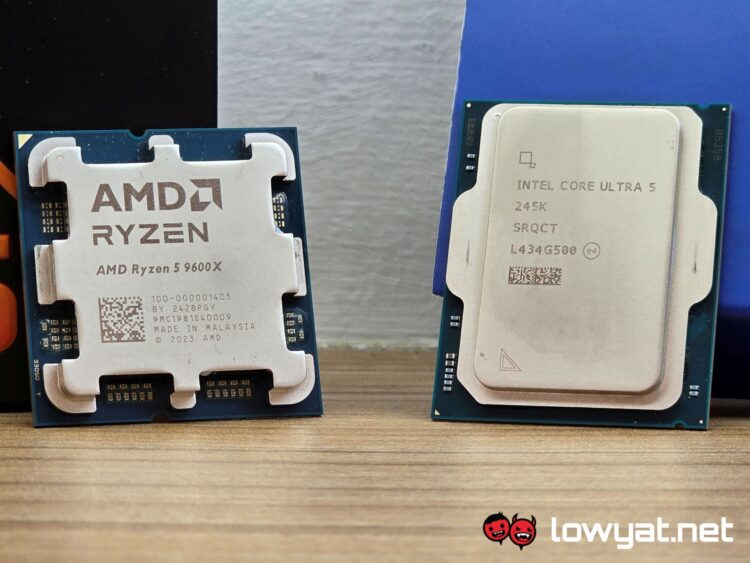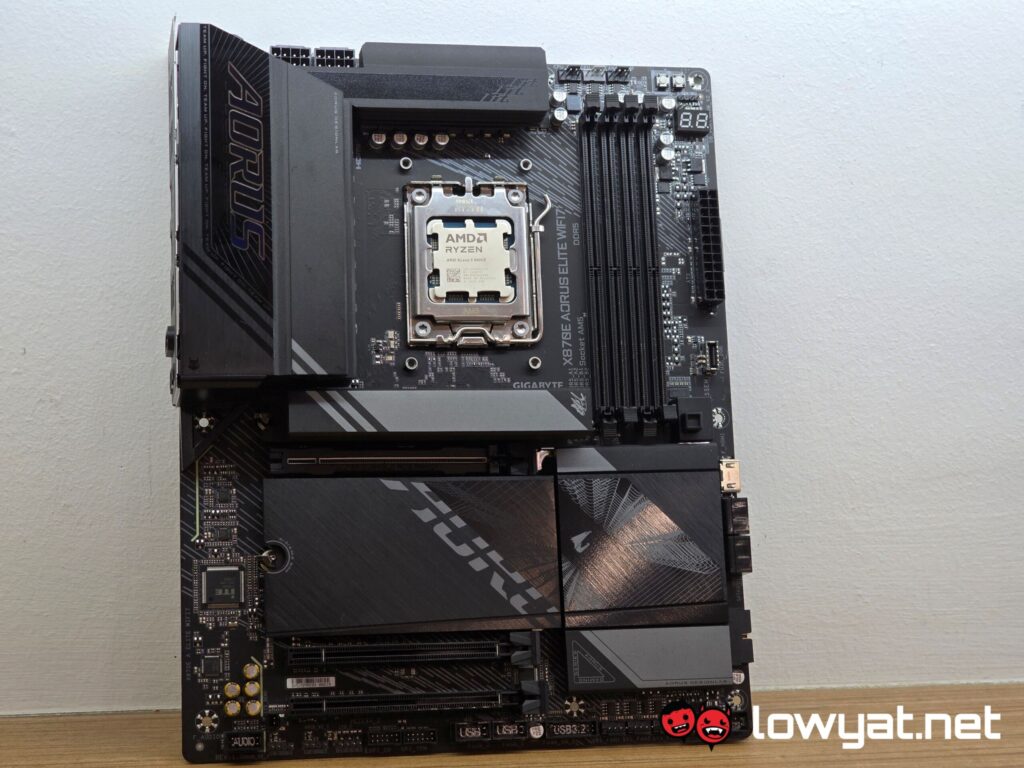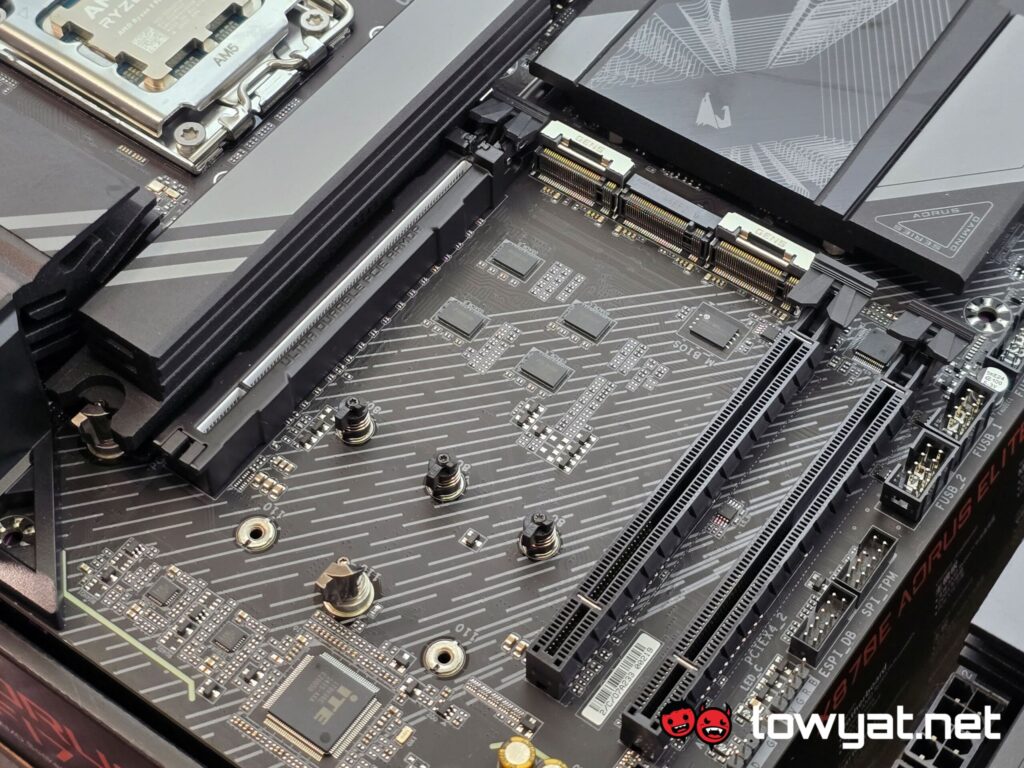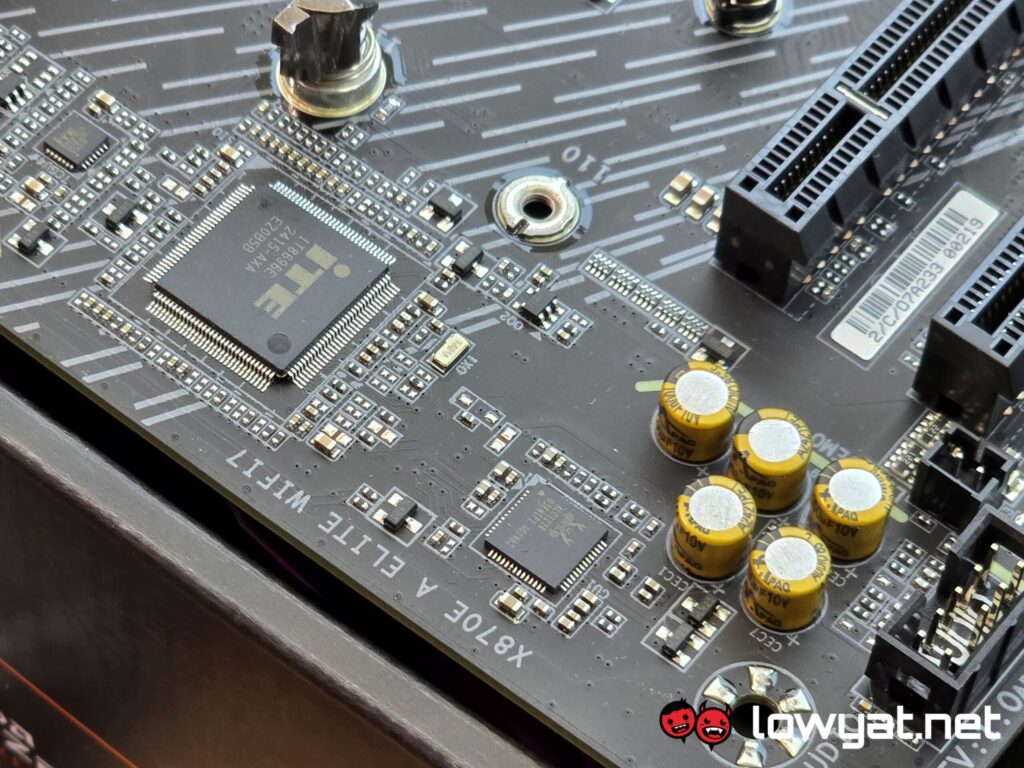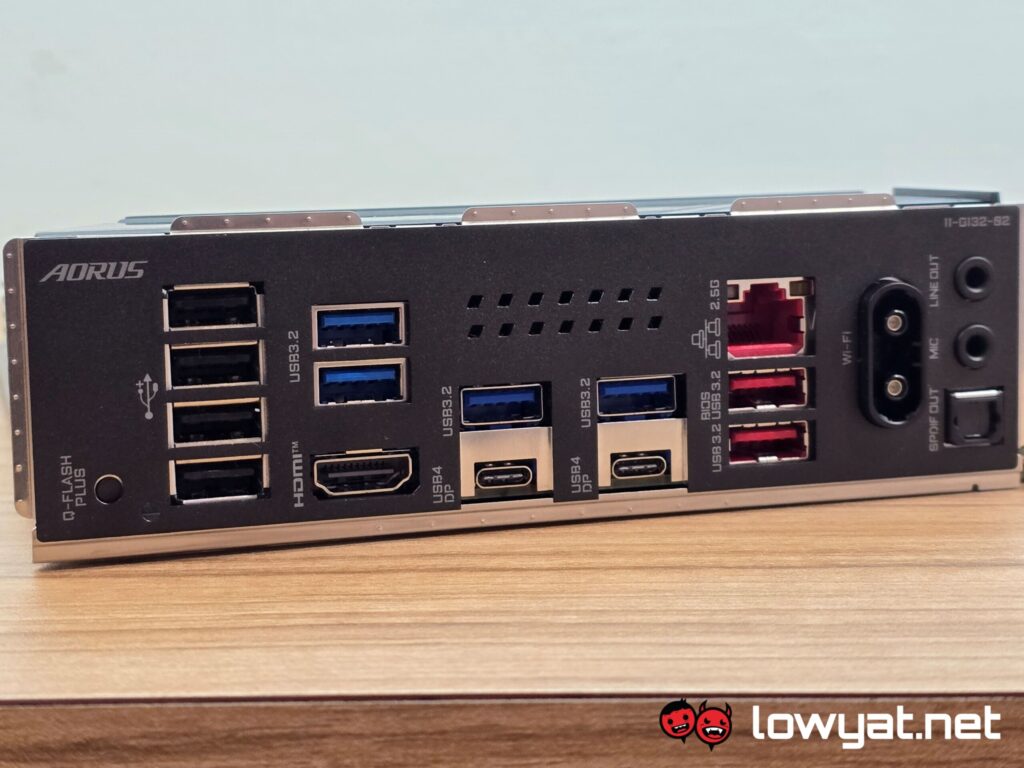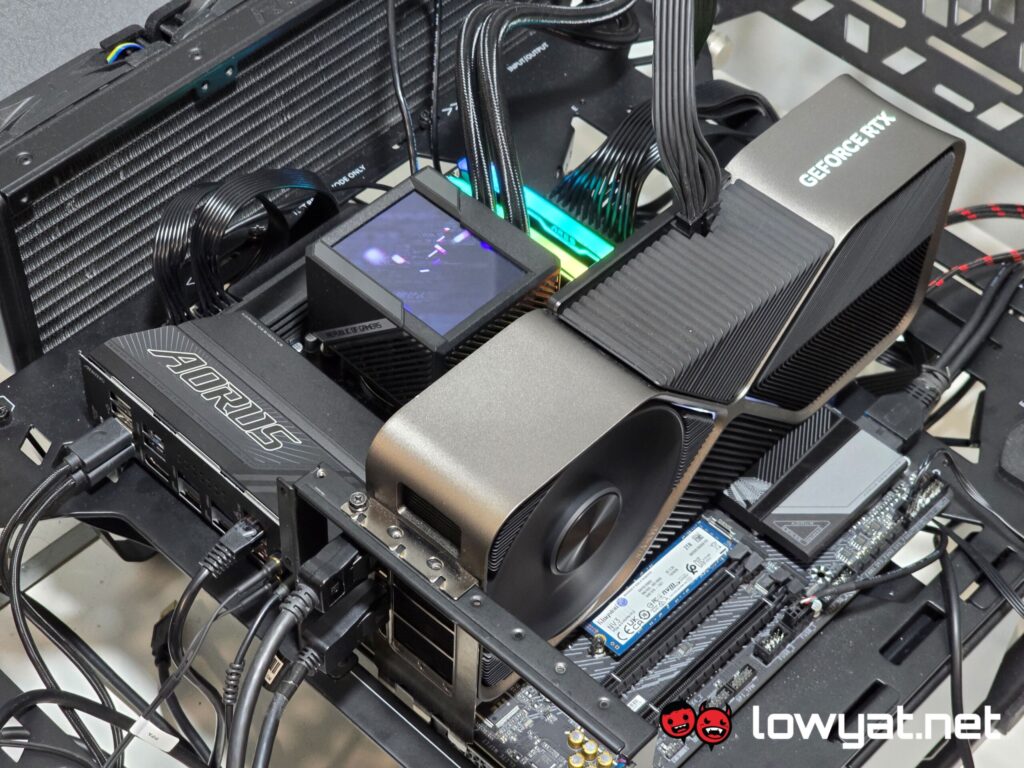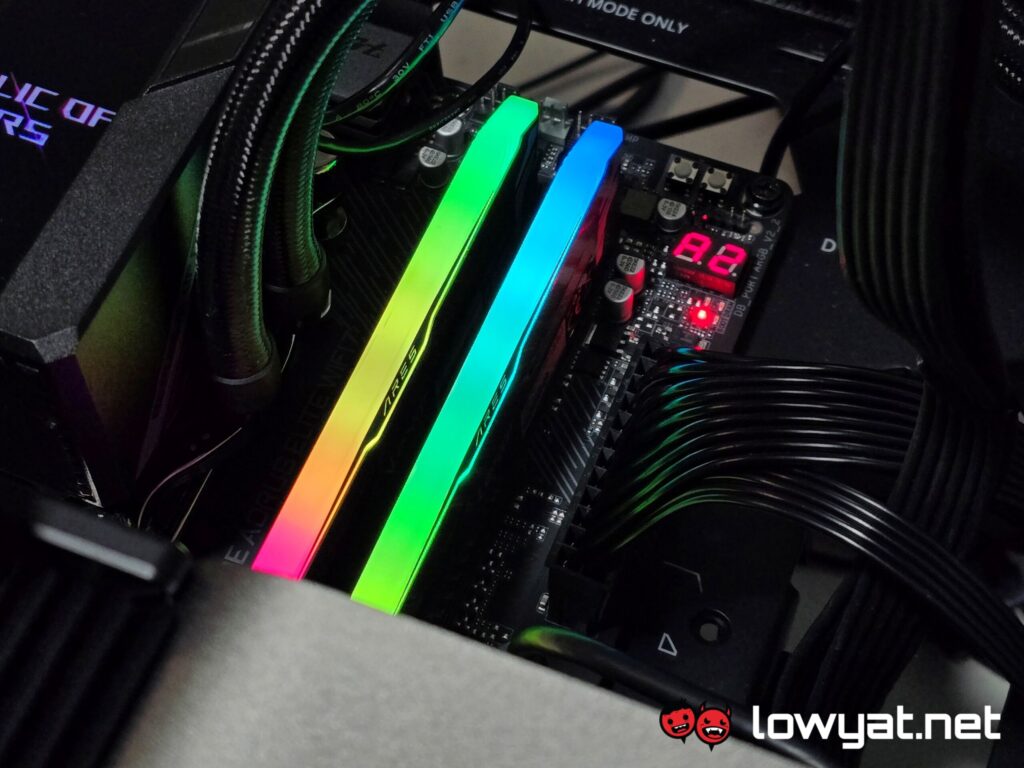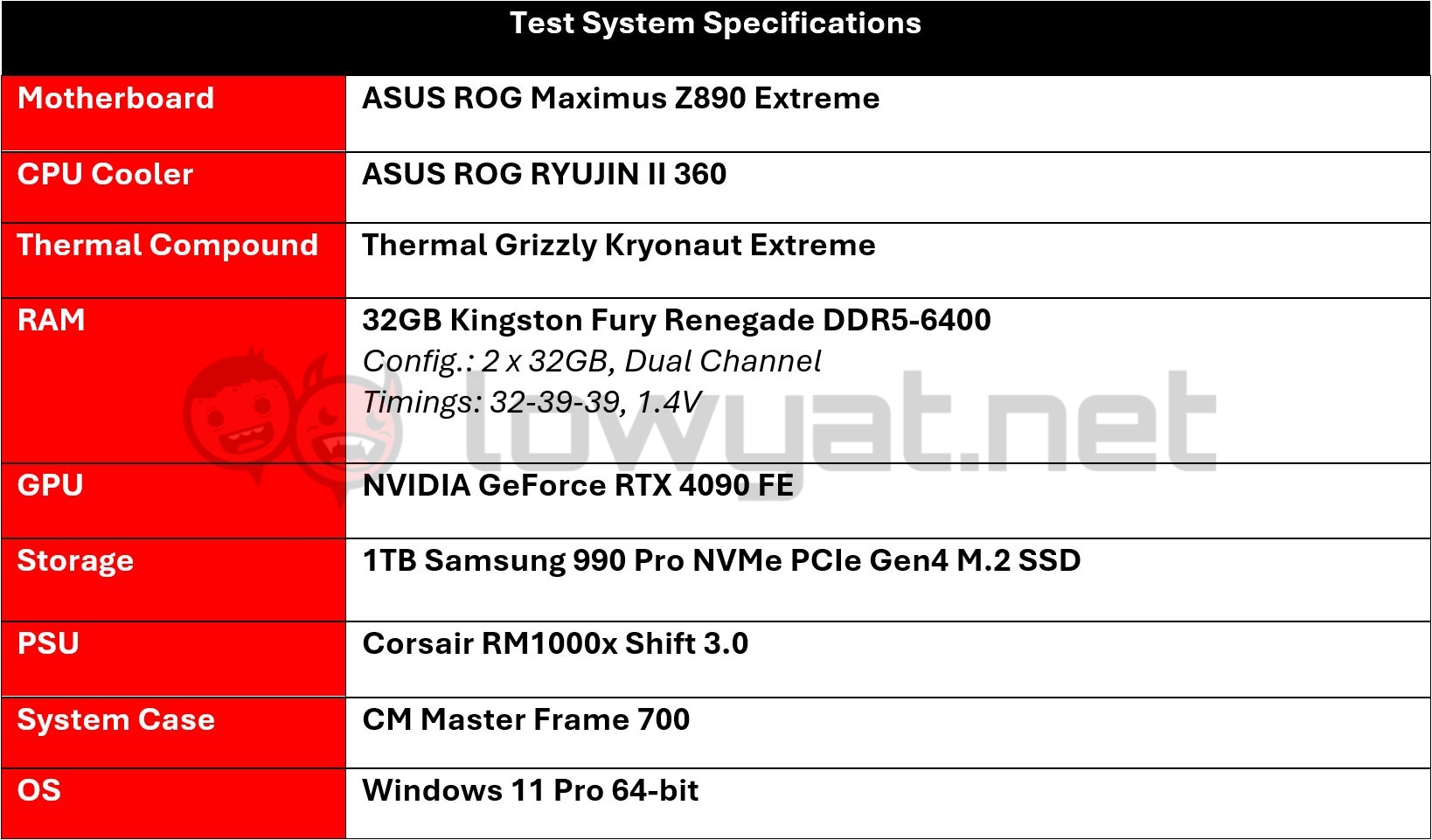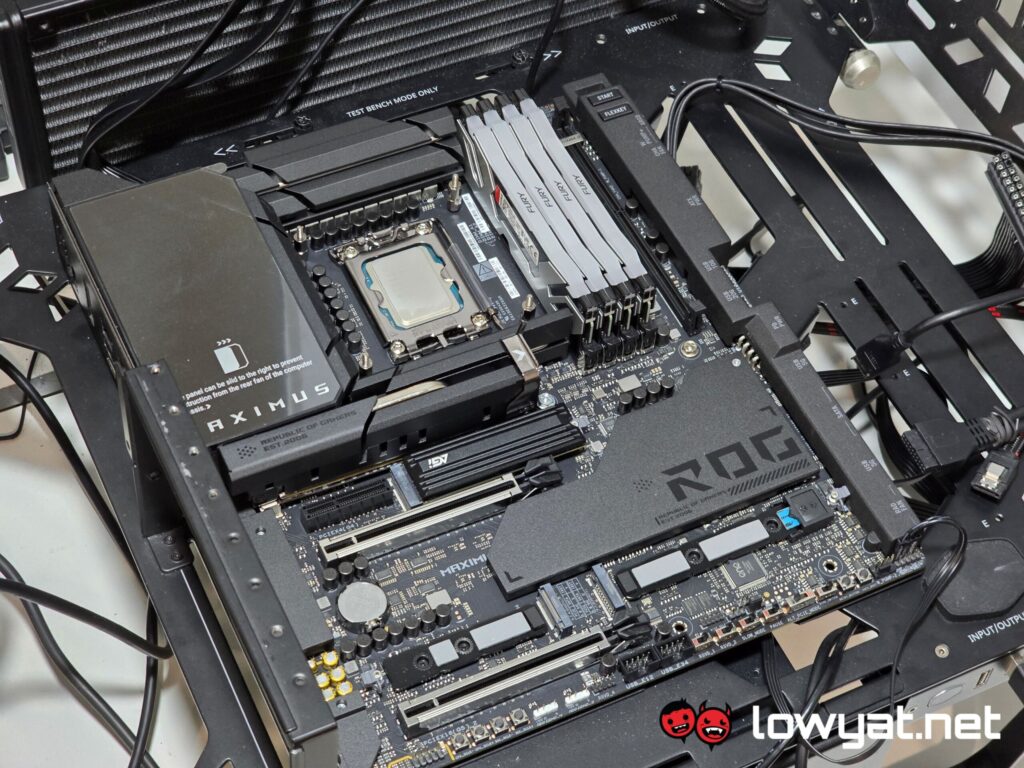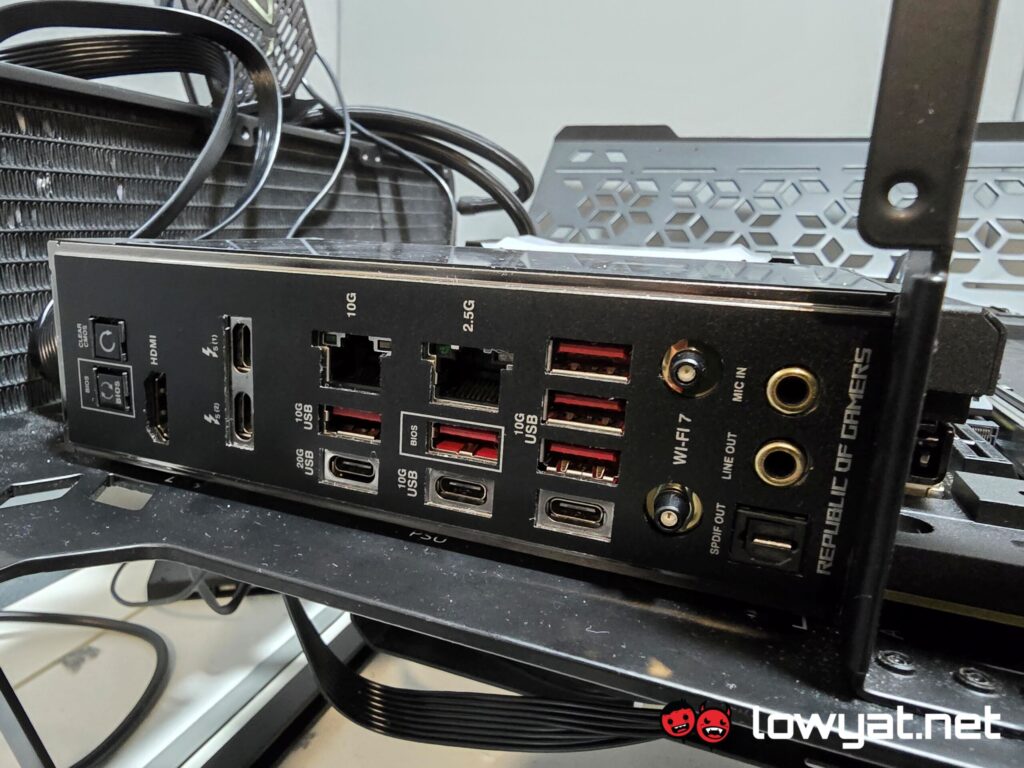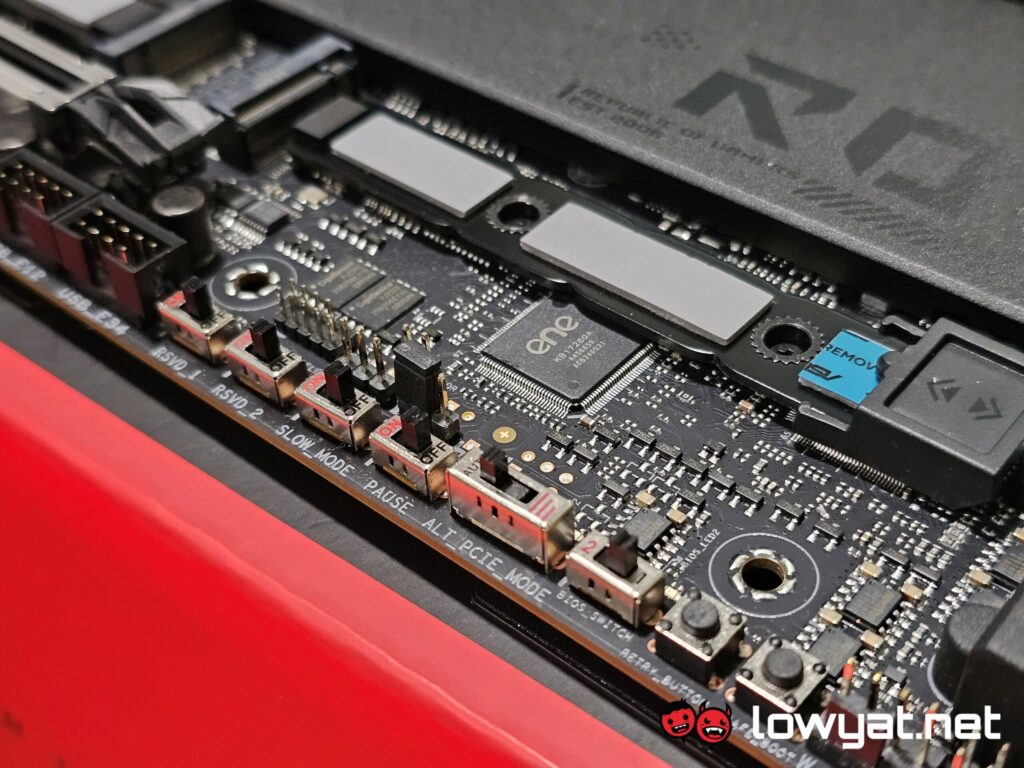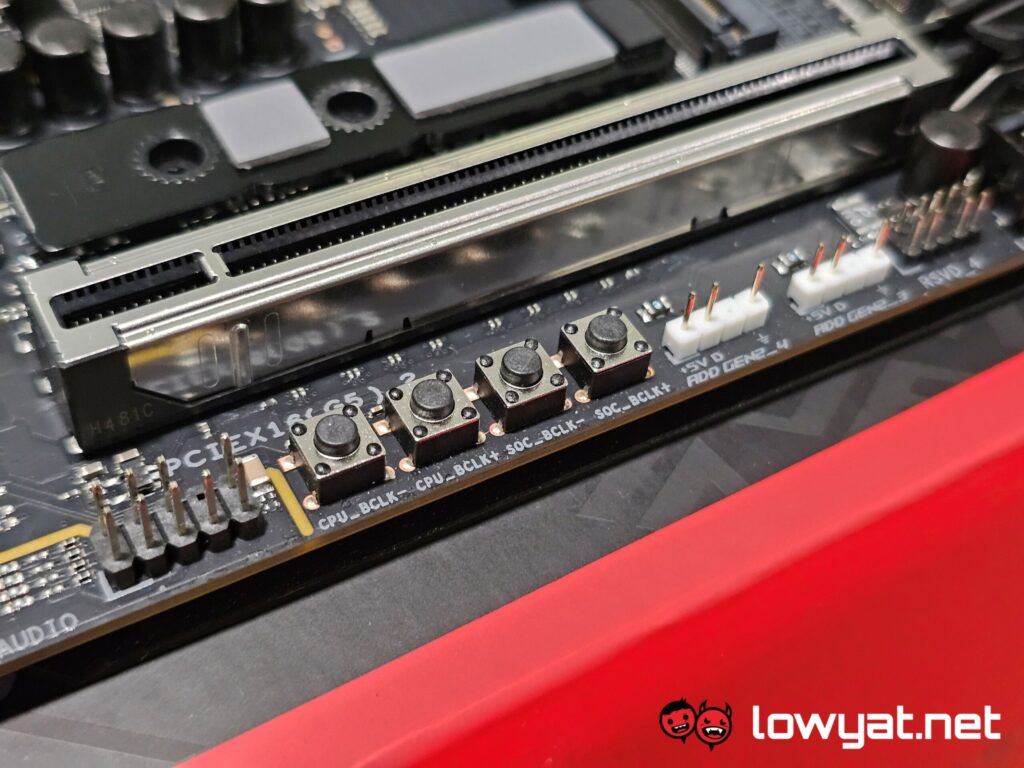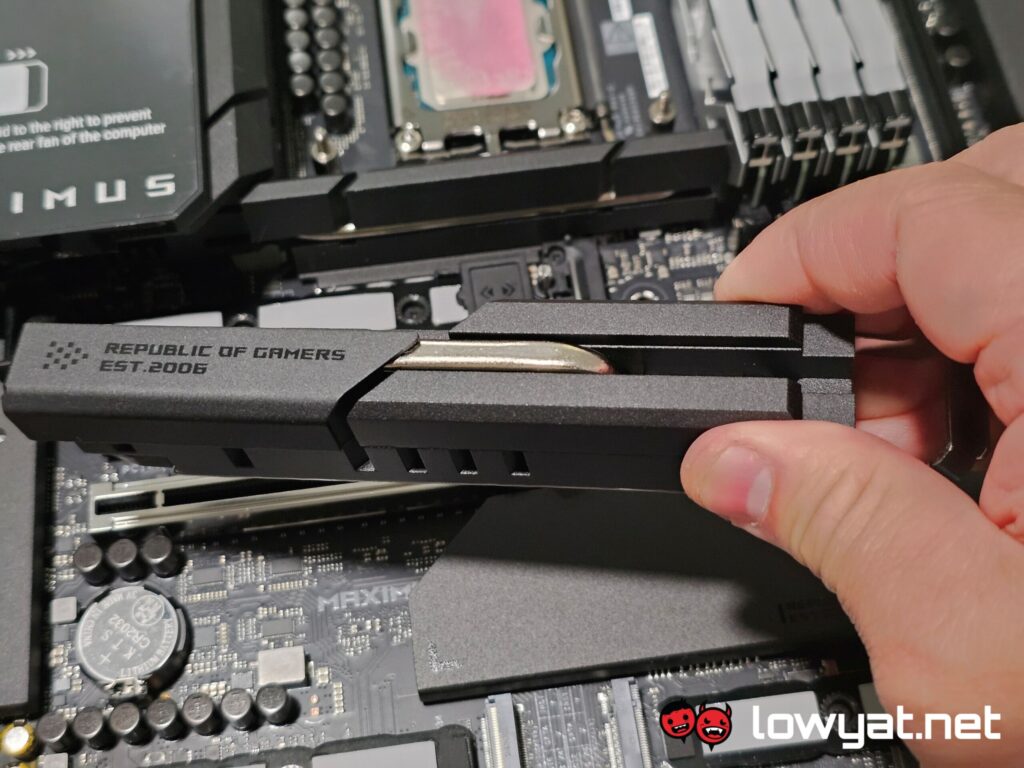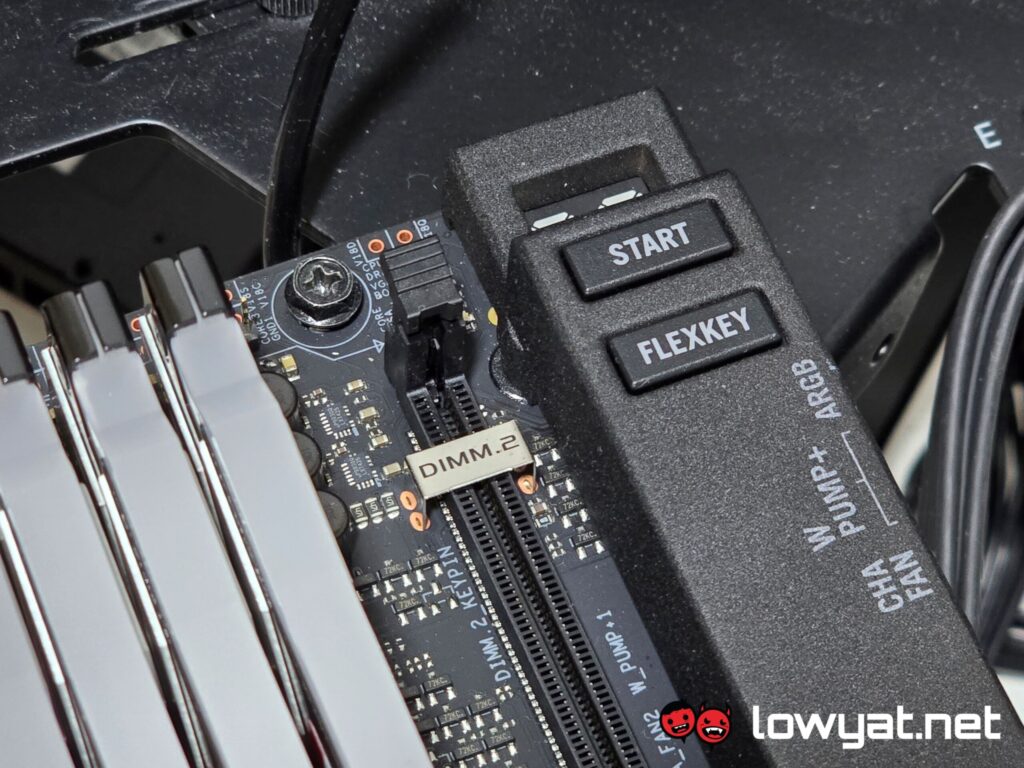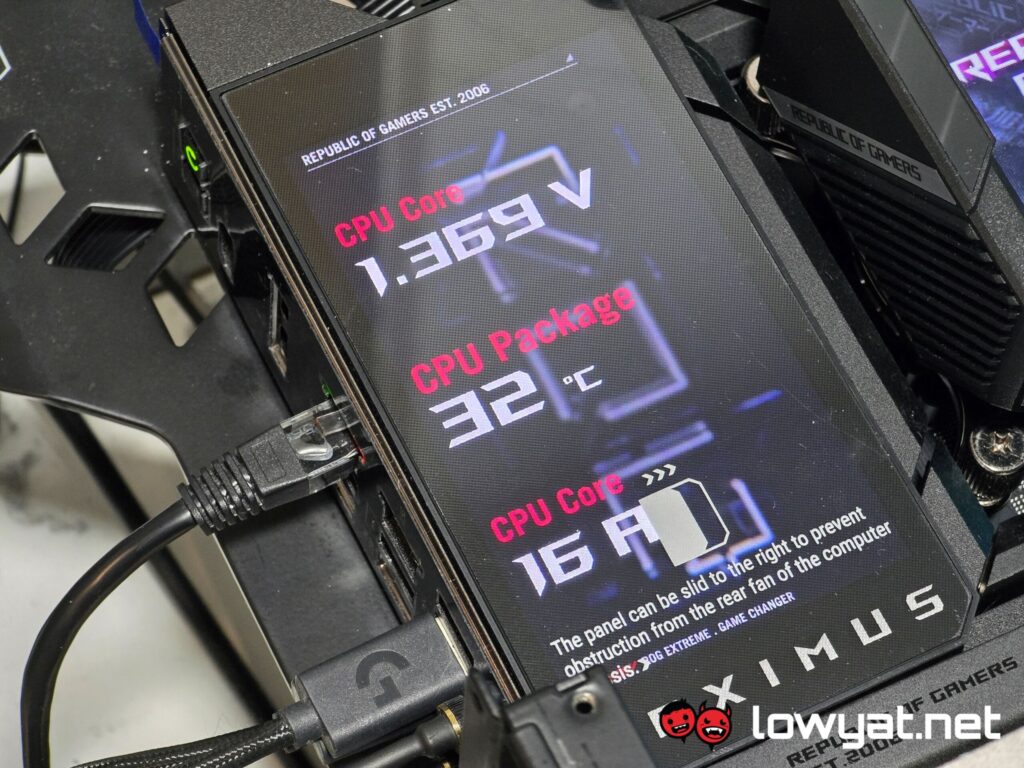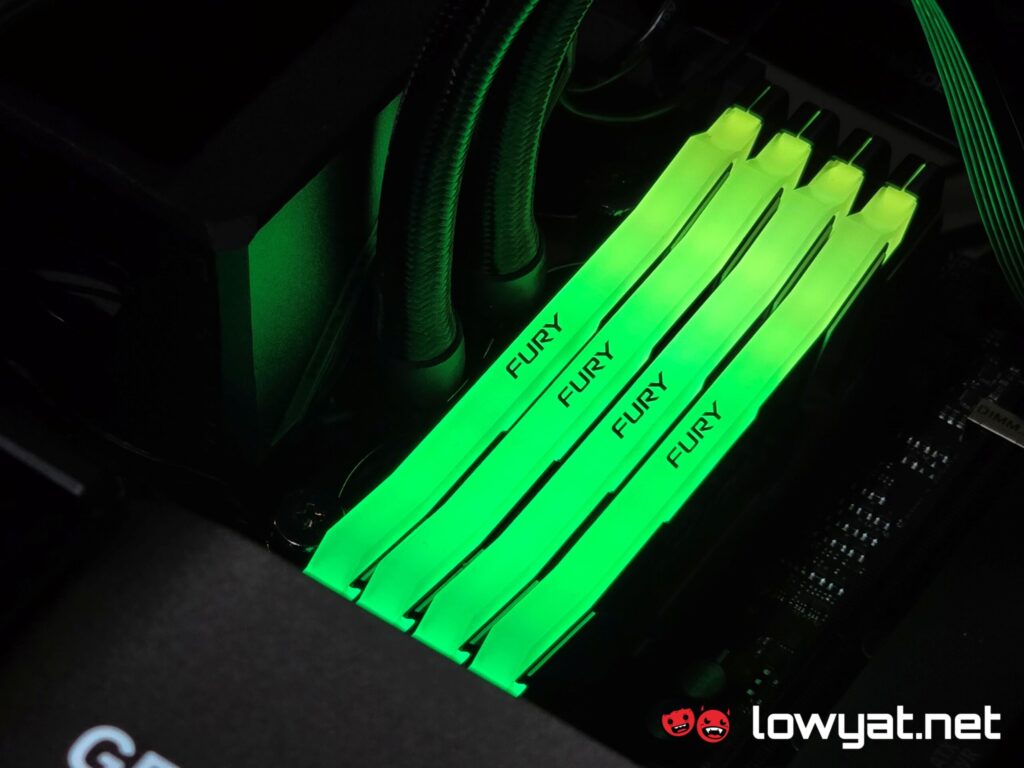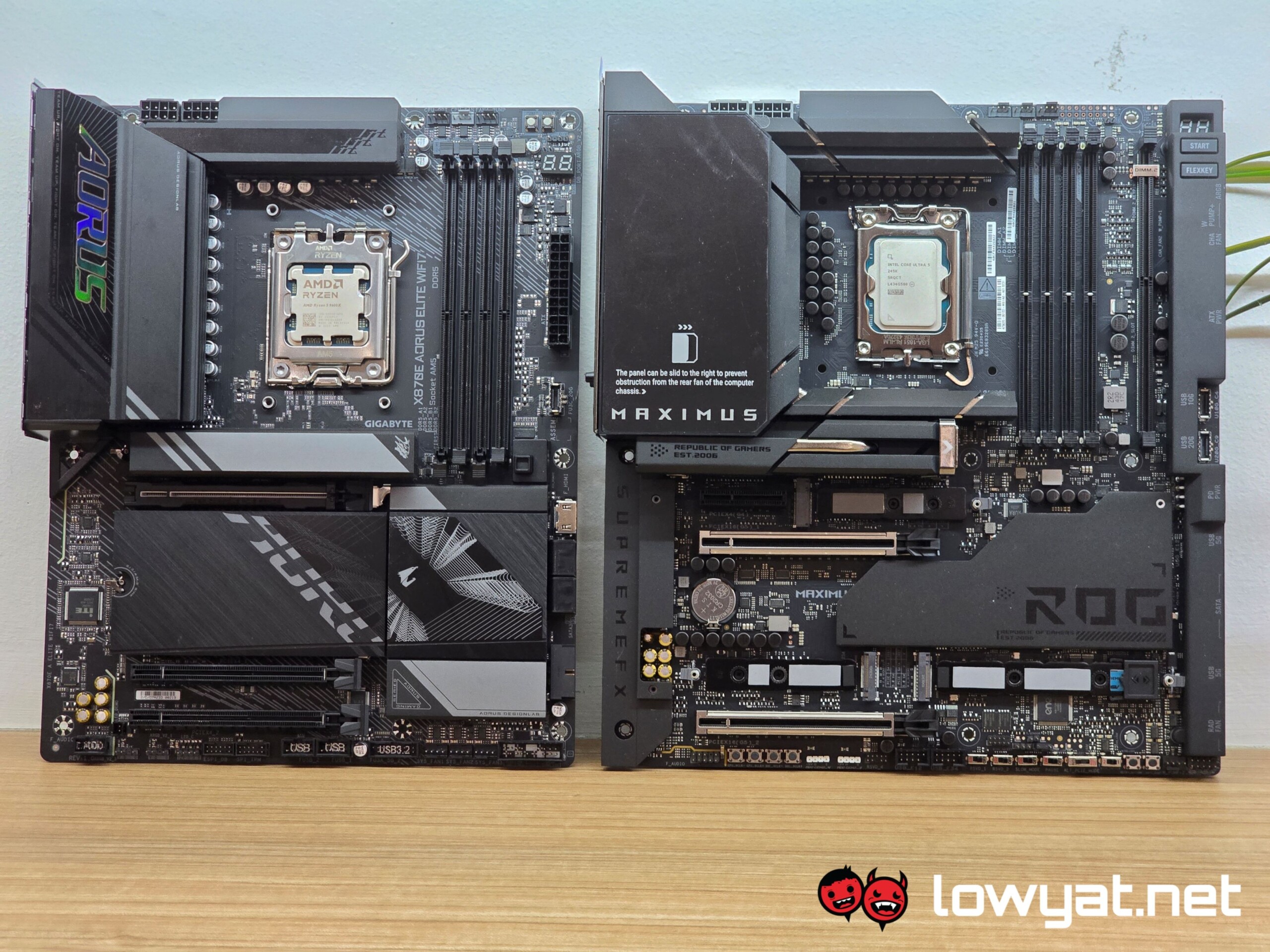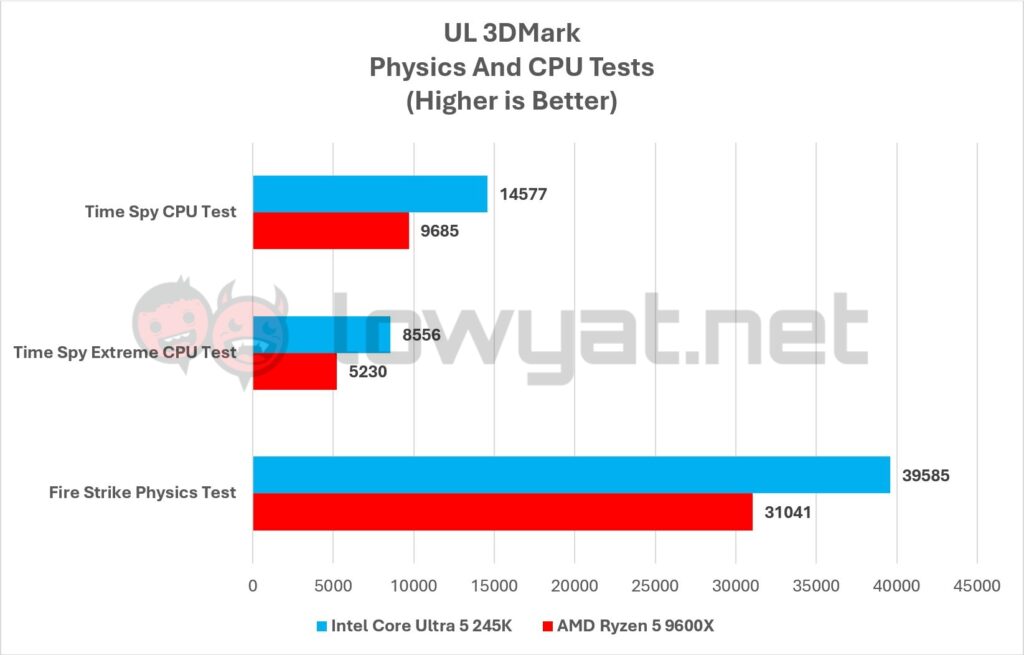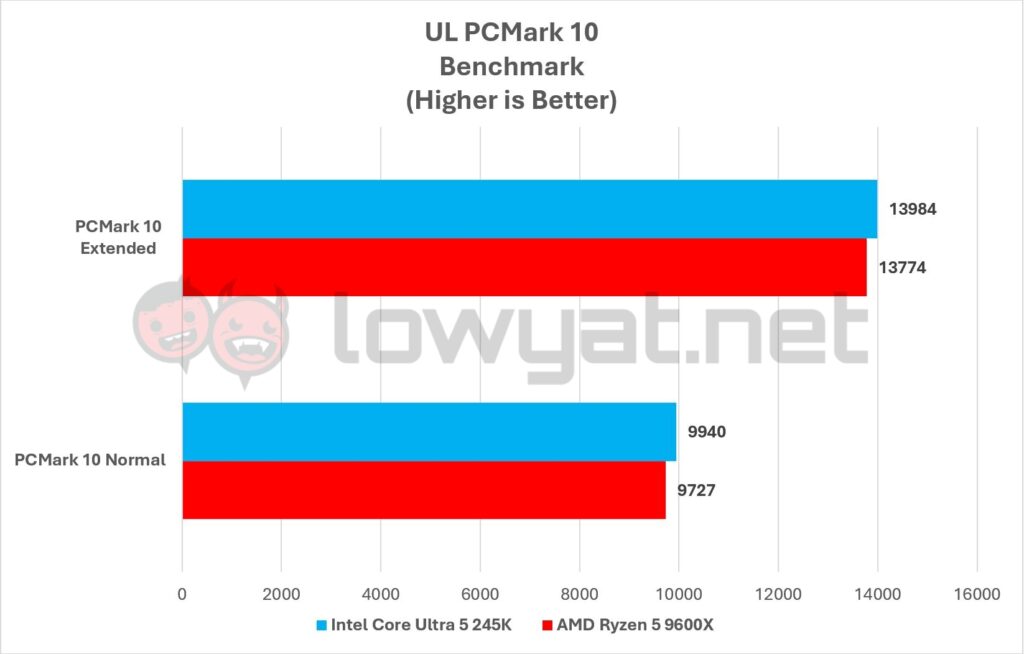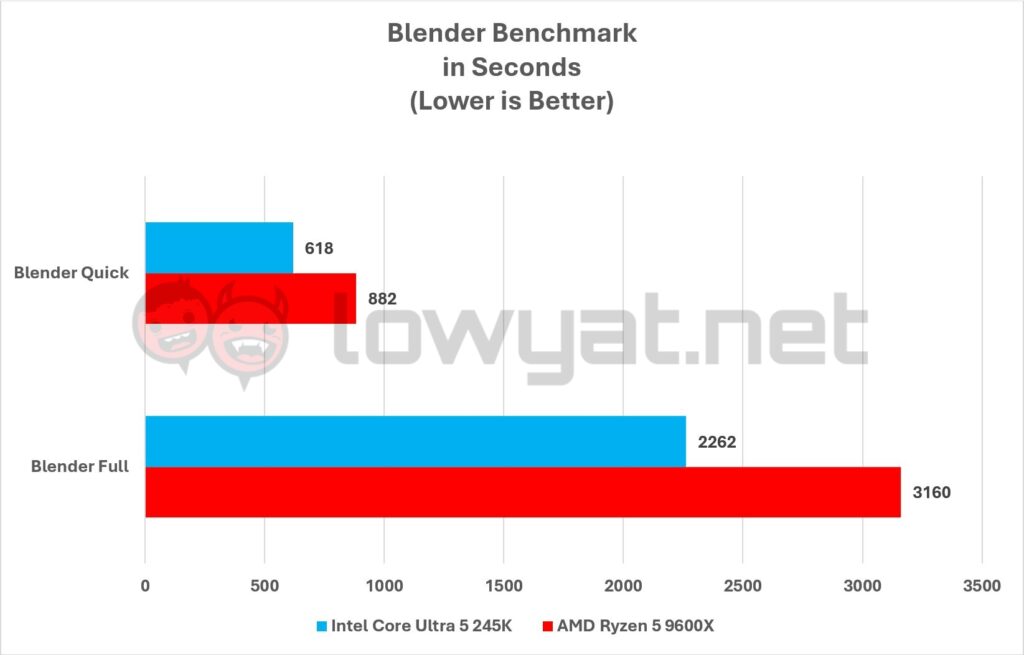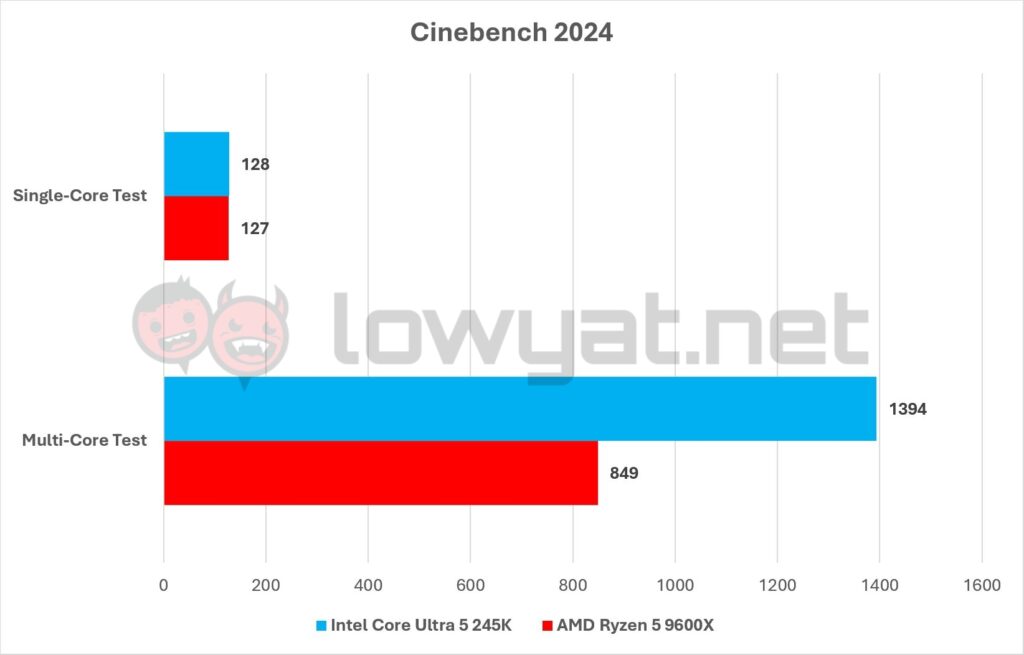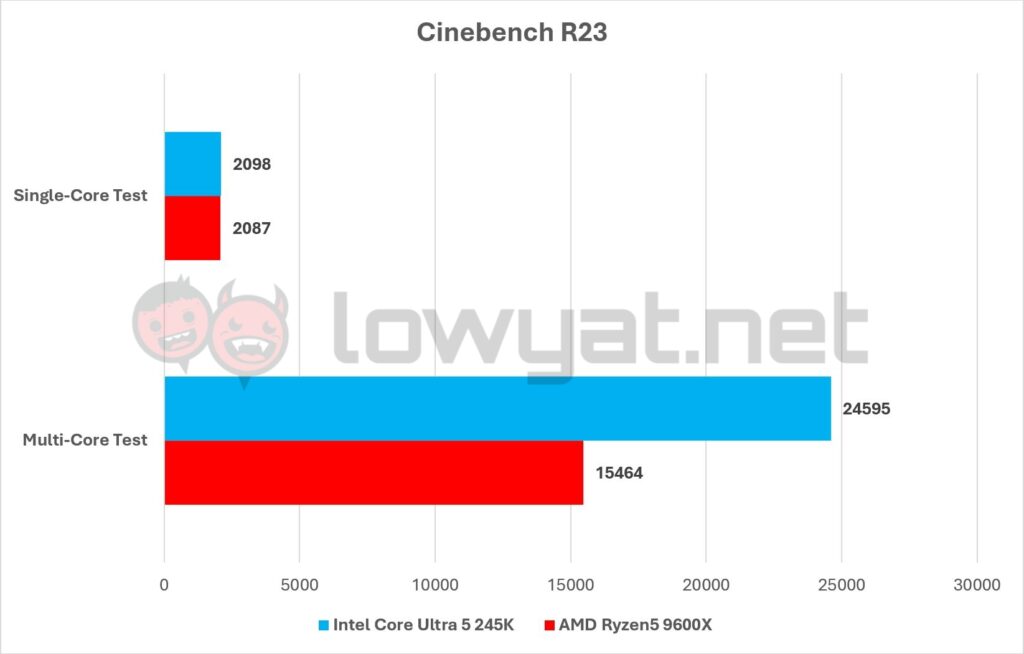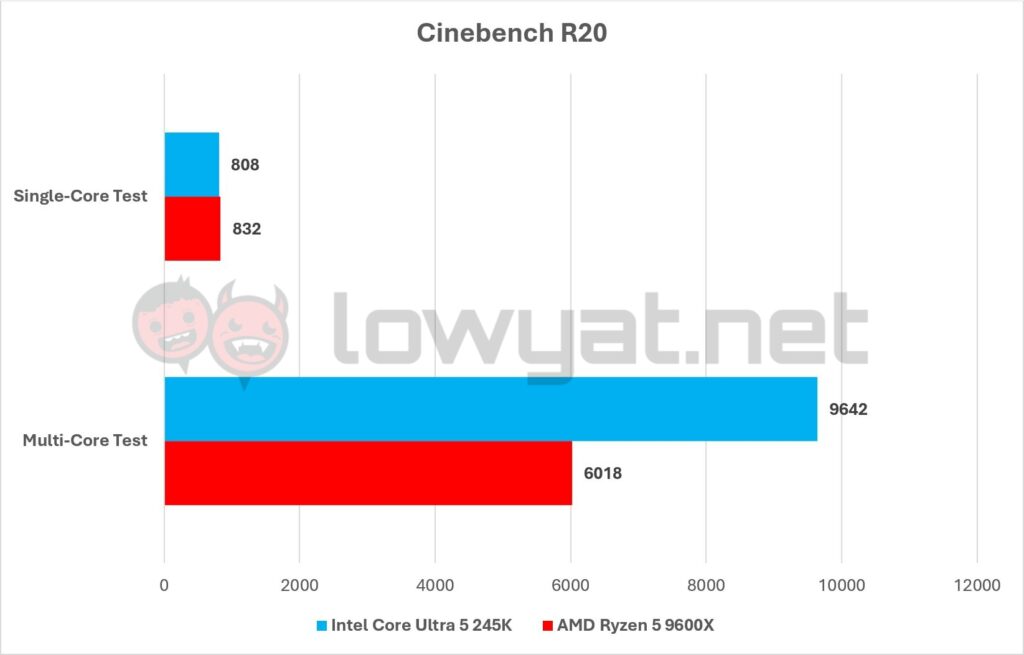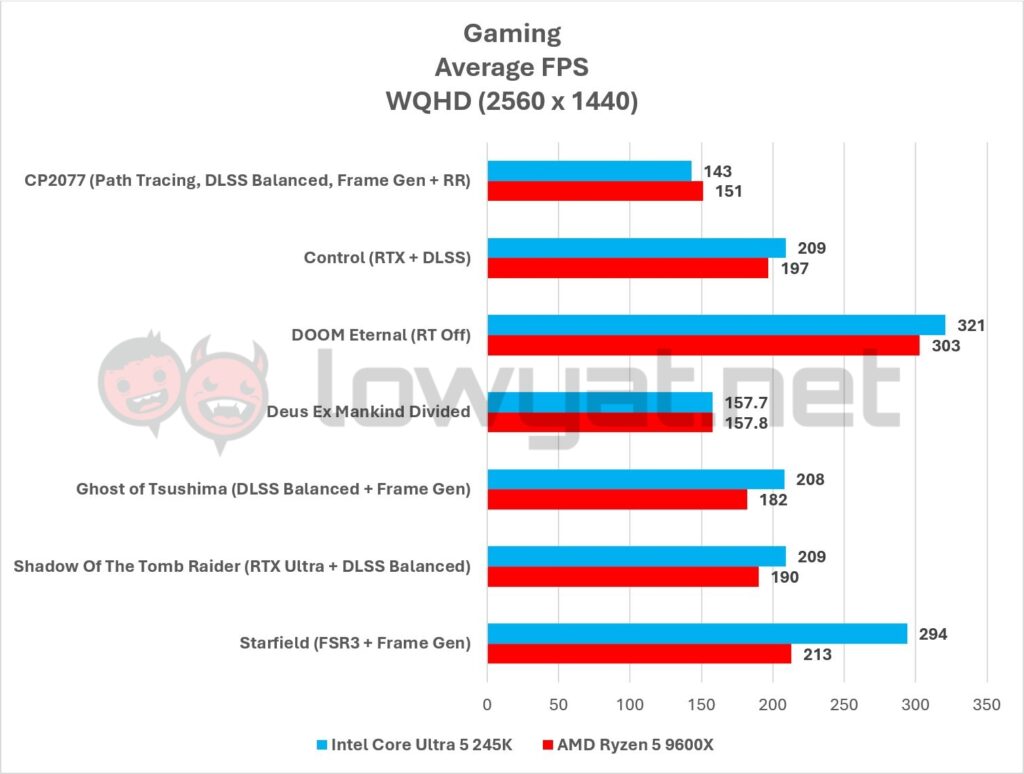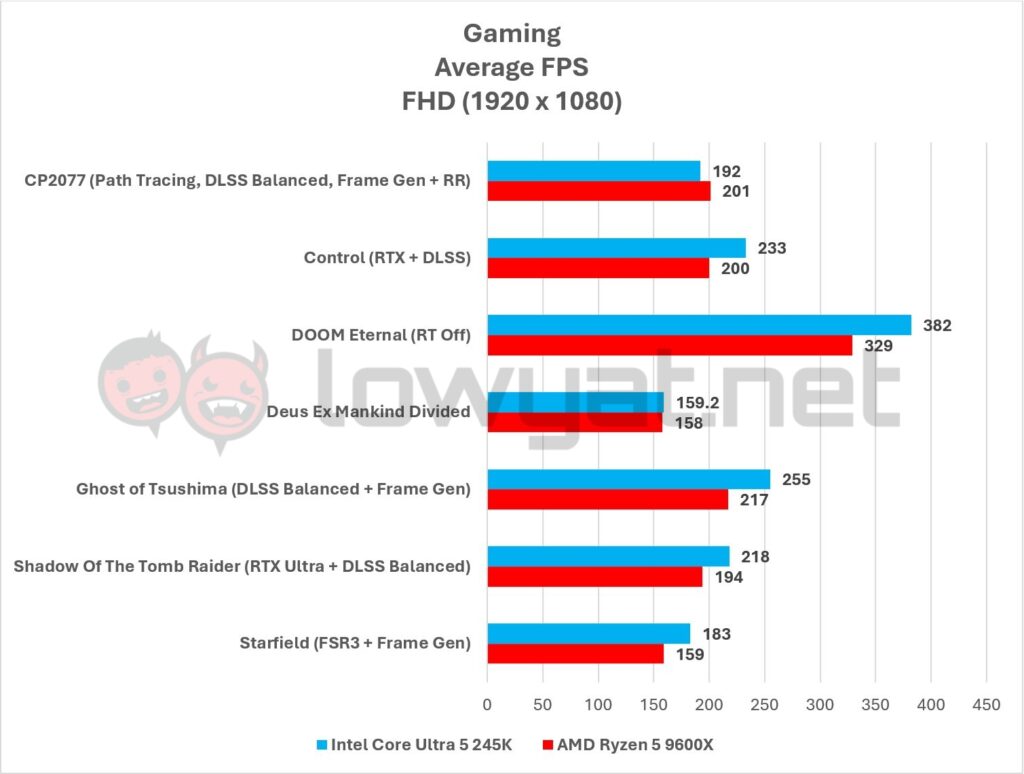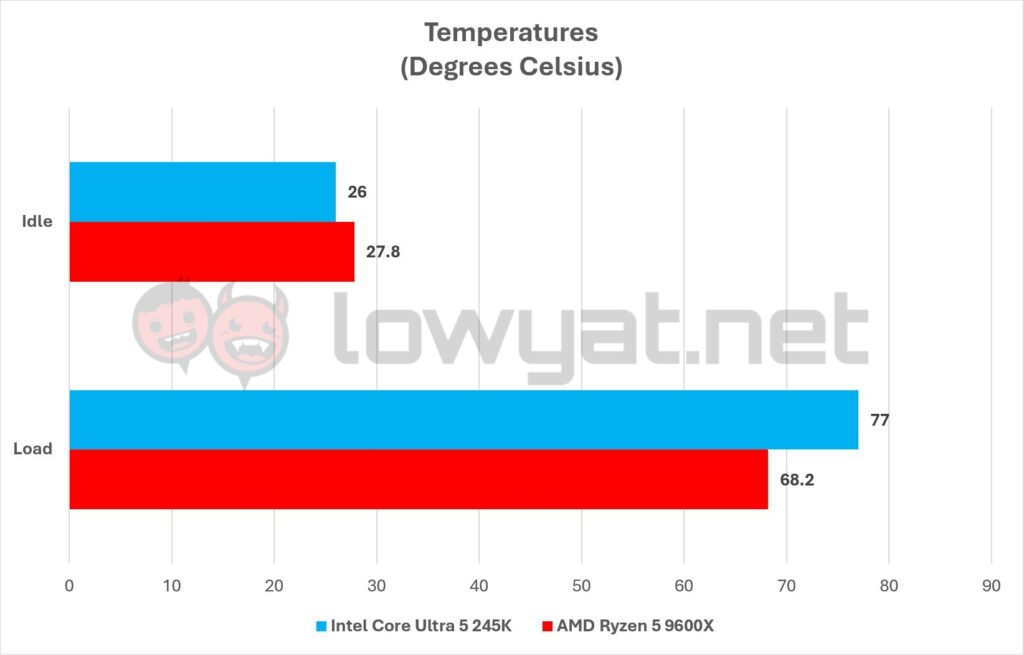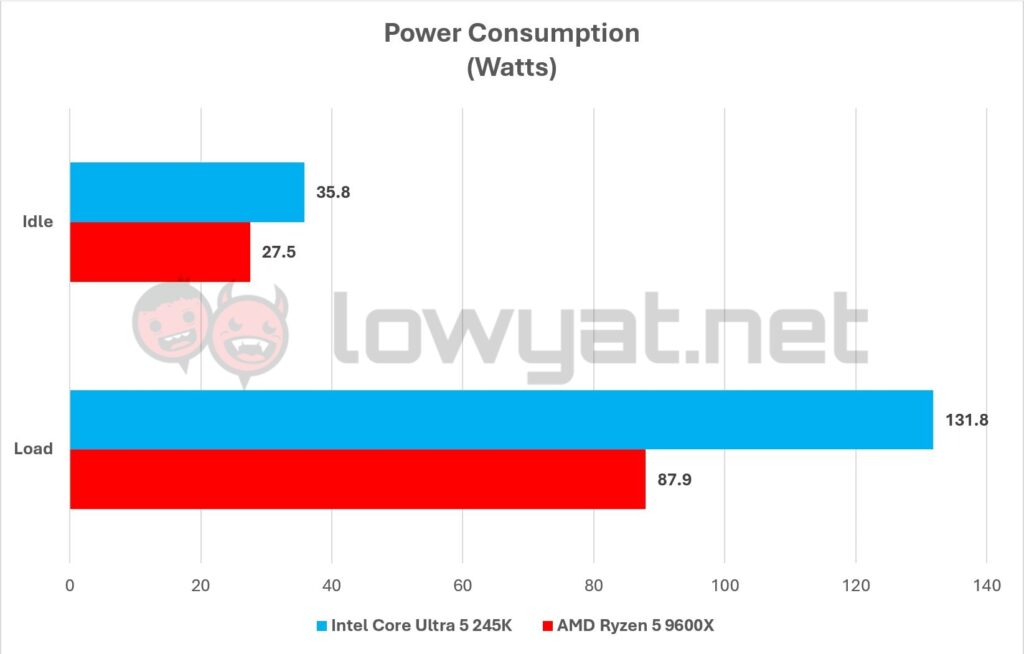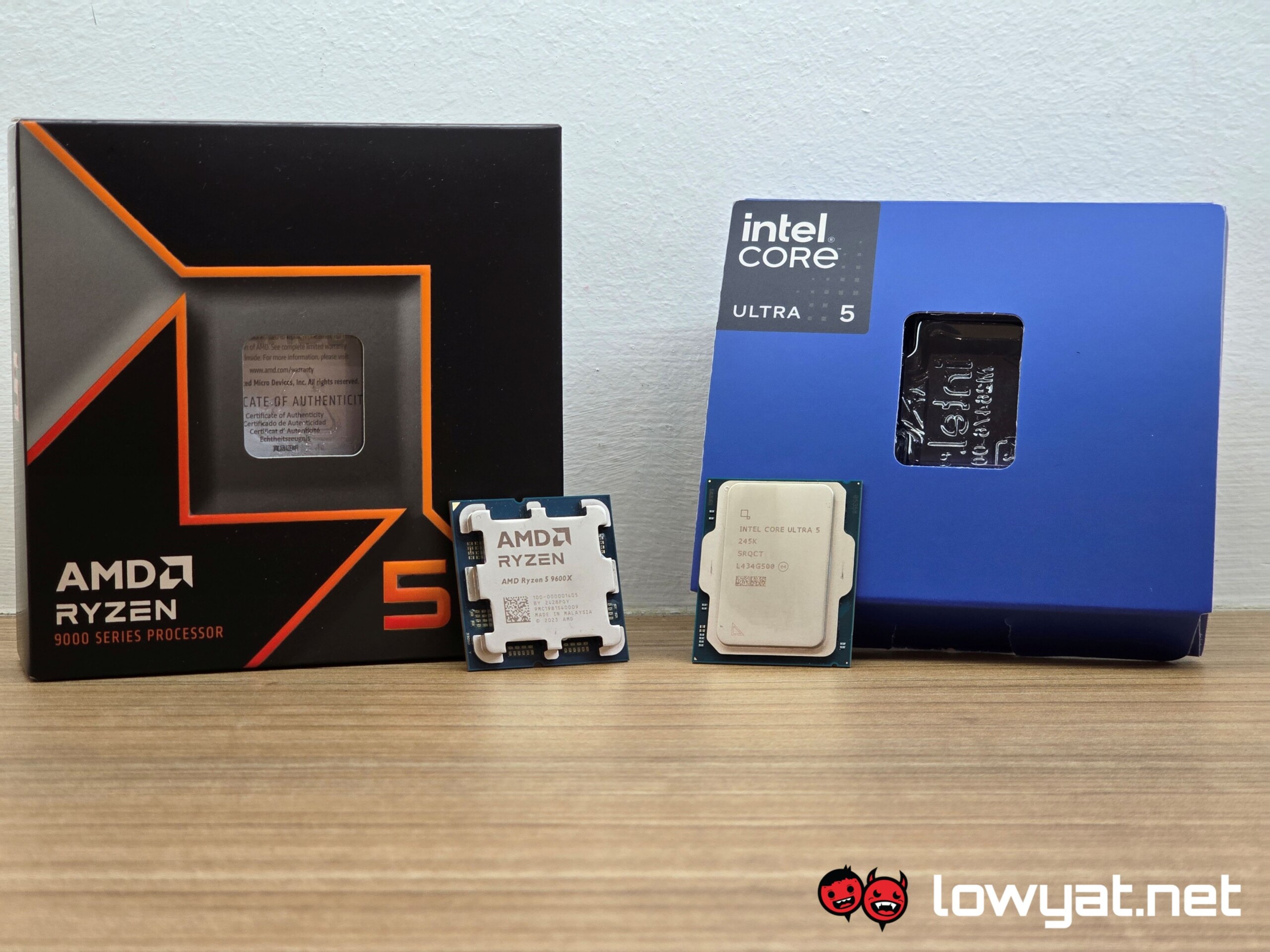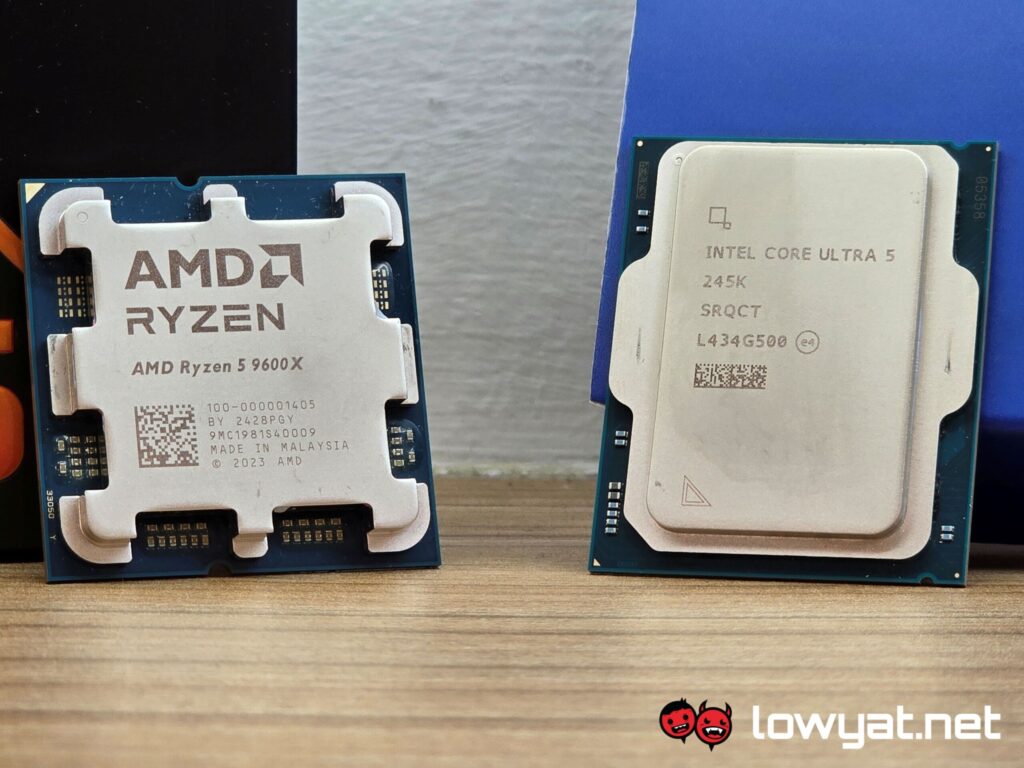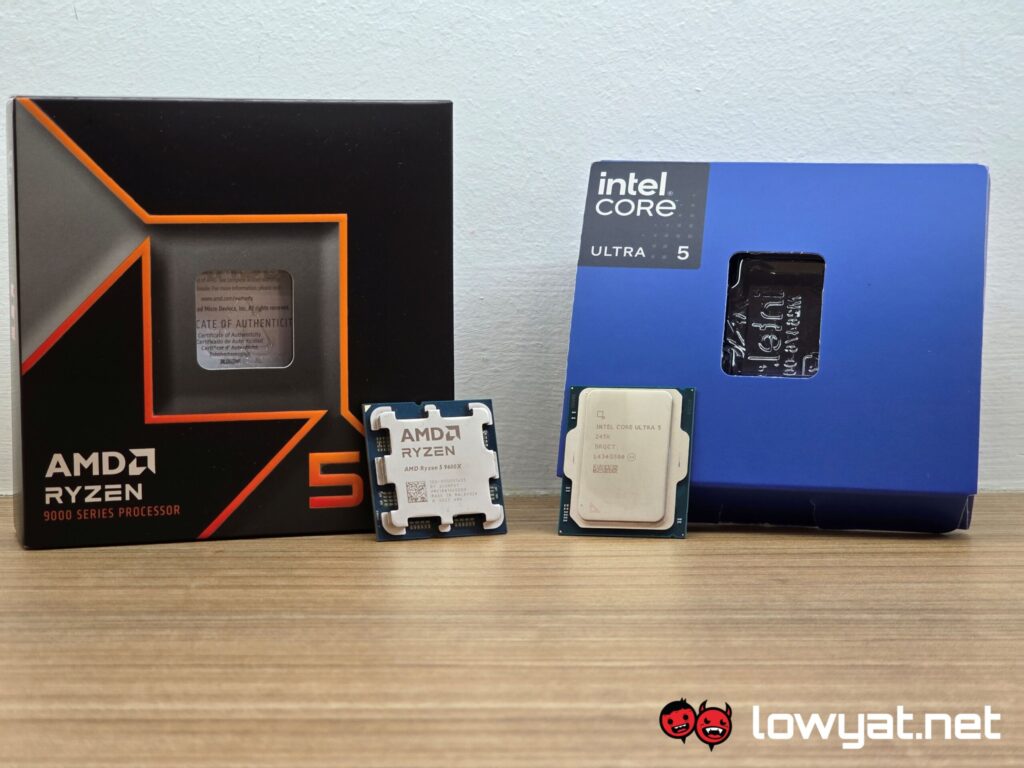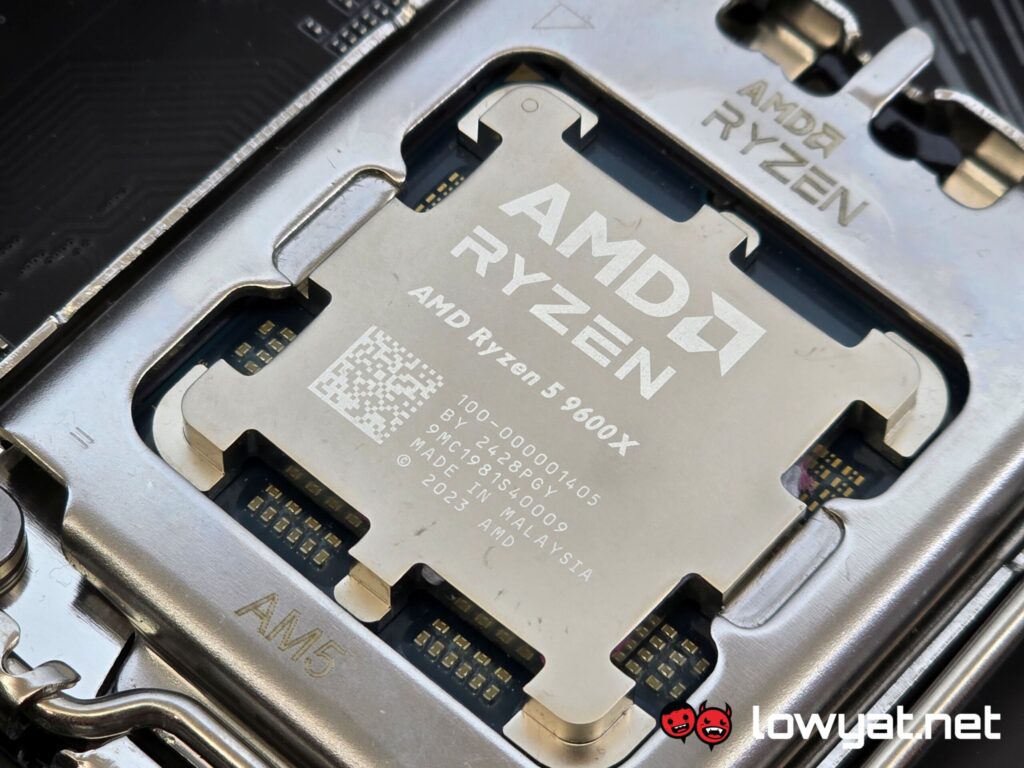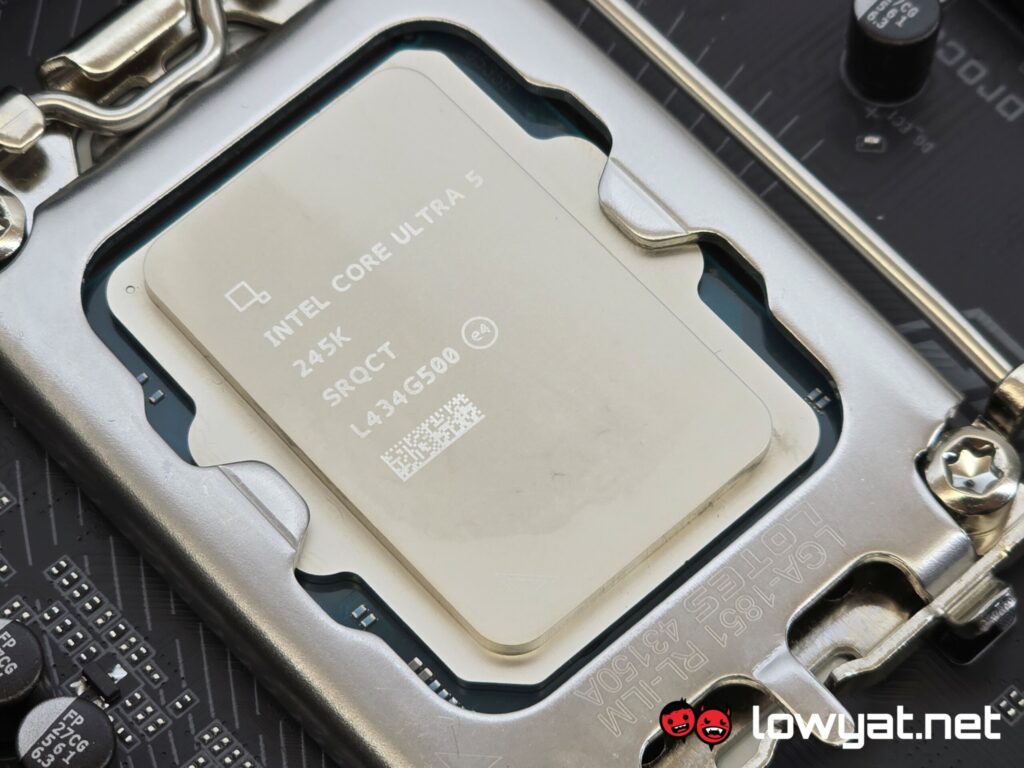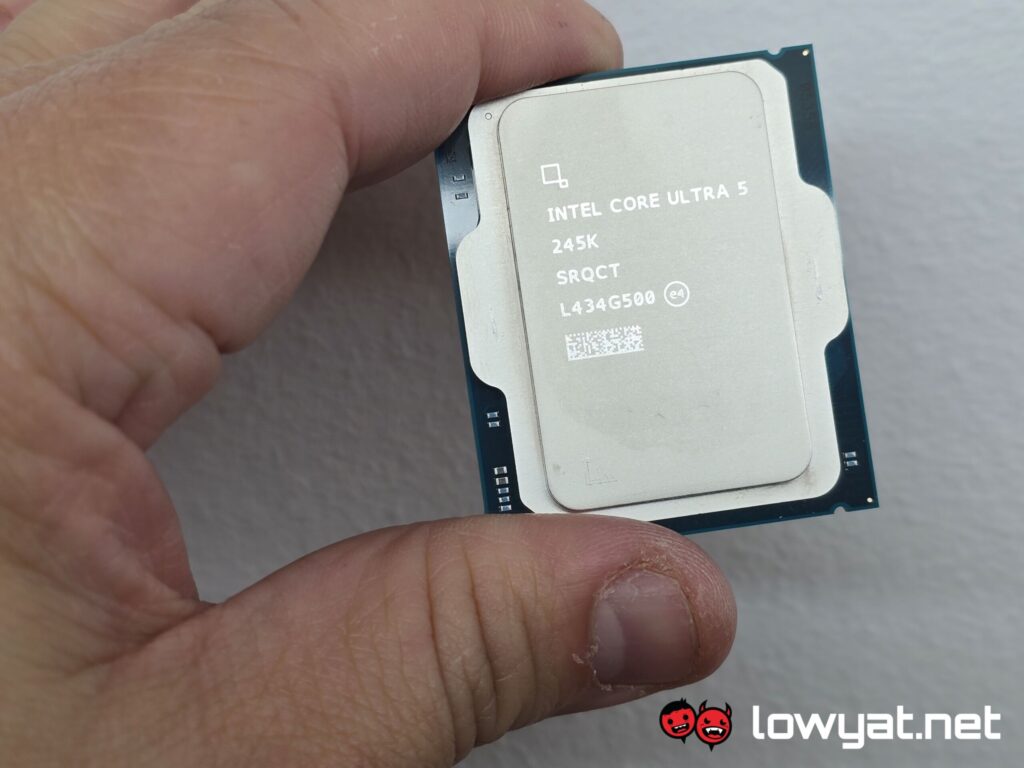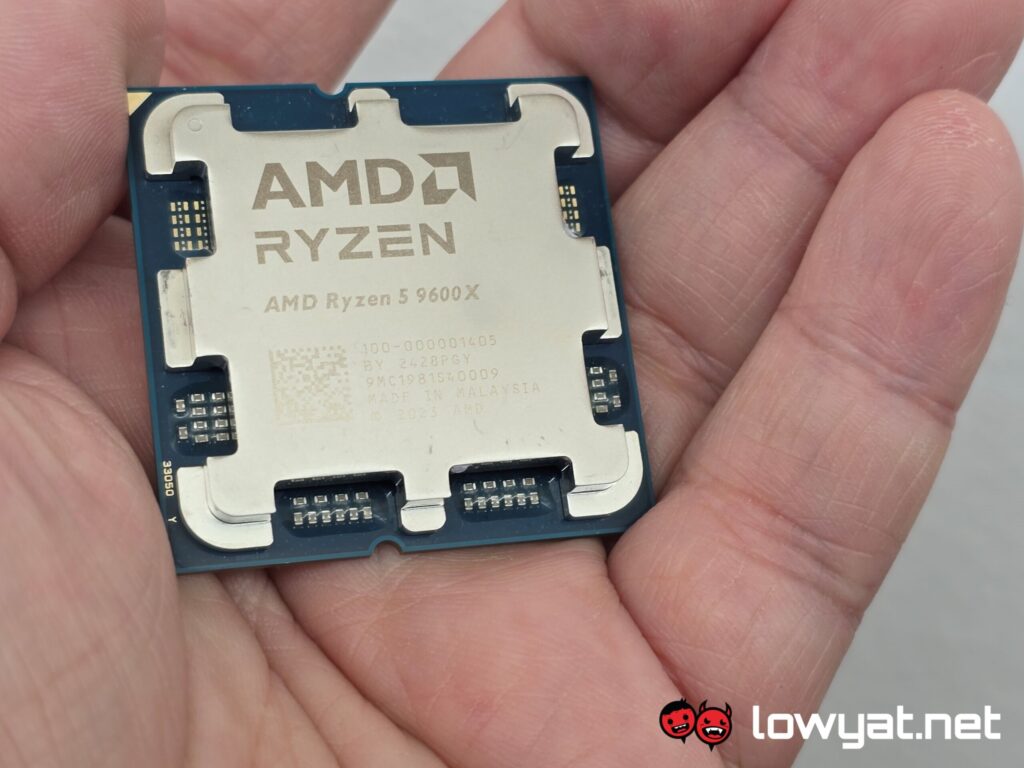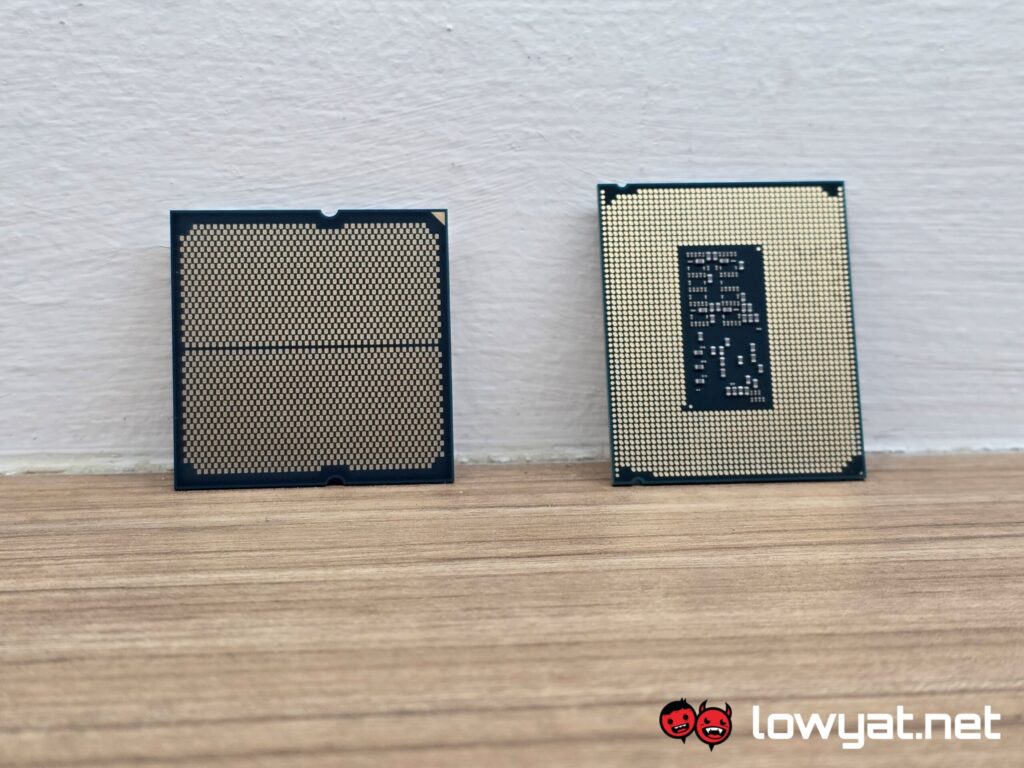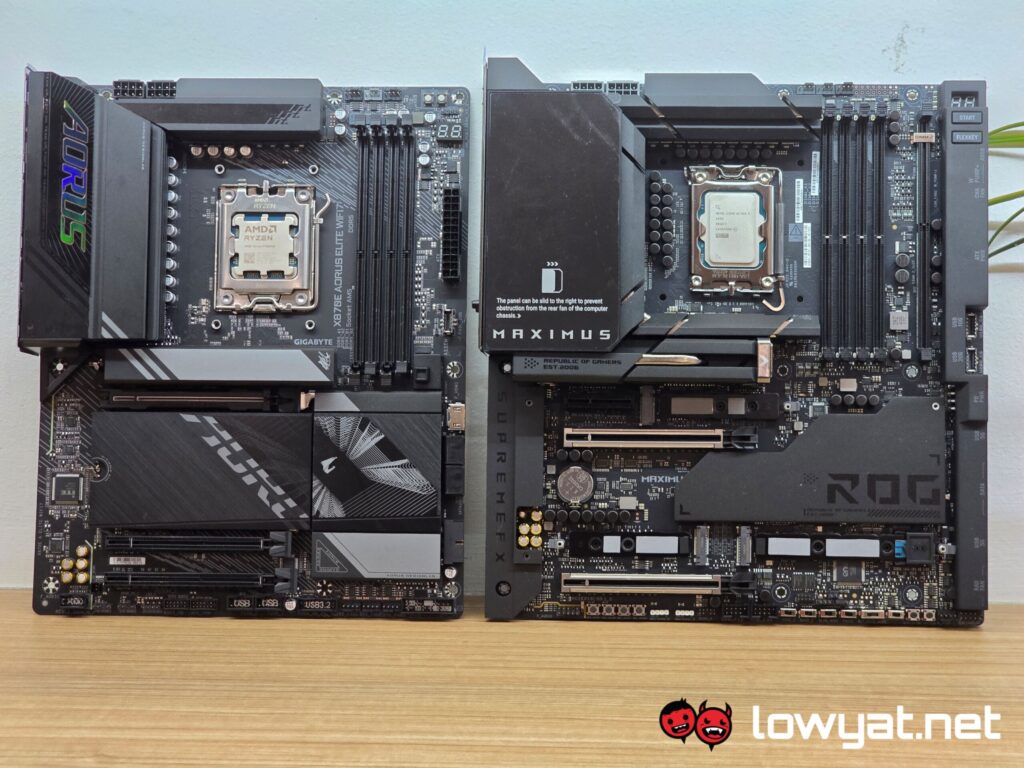As the end of the year nears and with final double-digit sales coming, some PC gamers are looking towards either updating their system or building a brand new rig from scratch, with one of the more recent mid-range CPUs from Intel or AMD. And in case you’ve been living under a rock, this year’s contenders just so happen to be the Core Ultra 5 245K from Team Blue and the Ryzen 5 9600X from the Red corner.
With both sides finally off the monolithic bandwagon, there’s a renewed sense of respect for Intel and its Arrow Lake architecture, the inclusion of an AI module notwithstanding. But enough about that, time to get into what I found playing around with these two mid-range beauties.
The CPUs
The Testbenches
So obviously, I’m going to need two testbeds, one for the Intel 245K and one for the AMD 9600X. Below are the specifications of the testbenches used to test both processors. To summarise, the board I used to test the 9600X was a Gigabyte X870E AORUS Elite WiFi7, while the board I used to test the 245K was the ASUS ROG Maximus Z890 Extreme, which is also the exact same board I used in my review of the Core Ultra 9 285K back in October.
Ryzen 5 9600X Testbench
I initially had an ASUS Crosshair X870E Hero Wi-Fi in my labs but sadly, it was on loan from AMD and the company needed it back. That said, I reached out to Gigabyte and asked if they could provide us with an X870E motherboard and luckily, they said yes. I’ll be putting up a review for this board before the year is out but at a glance, the board doesn’t look as over-engineered as its earlier boards.
The designs and functionality have pretty much been simplified; all of the M.2 enclosures are tool-less, as is the massive heatsink that covers the two PCIe 5.0 ports and a single PCIe 4.0 slot. Of course, it’s also supports Wi-Fi 7, what with it being an X870 Series motherboard.
Intel Core Ultra 5 245K Testbench
I won’t spend much time going over the board I used in testing the 245K. Like the X870E AORUS Elite Wi-Fi 7, there is a lightning review for it in the works, and again, it is the exact board I used when reviewing the 285K.
The Benchmarks
It’s clear to see that the 245K doesn’t break a sweat when it comes to the synthetic benchmarks. From 3DMark to the three main Cinebench tests, it pulls ahead of the 9600X, by miles even, thanks in no small part to its higher core count. Truly, 14-cores versus 6-cores, there’s little doubt whom the victor was going to be in this segment.
When it comes to gaming, that’s where the story seems to change. At a glance, the 245K is beating the 9600X out in average framerates. However, upon closer attention, the gains made by the blue team’s mid-range Arrow Lake-S aren’t necessarily huge. On top of that, both CPUs are keeping their frame count above the 150 fps line.
Cyberpunk 2077, as one example, is the only game that the 9600X appears to pull ahead of the 245K but again, not exactly by a significant margin. Deus Ex Mankind Divided, a game that is clearly getting a little long in the tooth but still just as demanding, shows both processors capping out at the 158 fps mark, and on both 1440p and Full HD.
As for both thermal and power efficiency, the 9600X is the clear winner here. Despite Intel’s claims that Arrow Lake-S would draw less power than its predecessor while generating the similar performance metrics, the 245K is still nowhere near as efficient as the Zen 5 architecture that resides in the 9600X and the rest of the Ryzen 9000 Series.
Final Thoughts
At the end of the tests, one point was made evident: both the Intel Core Ultra 5 245K and AMD Ryzen 5 9600X are undoubtedly proficient. Neither processor showed any signs of slowing down, and each had the upper hand over the other in one way or another.
On one hand, Intel’s pendulum is still on the upswing or at least, that appears to be the case with its 245K. As the graphs show, it overshadows the 9600X when it comes to productivity-oriented tasks and benchmarks, and when it comes to gaming, it’s trading blows with Team Red’s own mid-range Ryzen 9000 offering. Also, it’s doing all that without hyperthreading.
On the other hand, the 9600X is ever so slightly cheaper and despite having far fewer cores – it’s a 6-core CPU, in case you need a quick reminder – being based on the Zen 5 architecture ironically makes it the option with improved power consumption. By comparison, this is a far more efficient CPU if gaming is the driving force behind your decision to build a PC.
And so, if you’re planning on going with Team Intel or Team AMD’s latest mid-range offerings, and if you’re coming off a rig that you built about two to three generations ago, fret not. It’s safe to say that you can’t go wrong with either of these processors.
Photography by John Law.
Follow us on Instagram, Facebook, Twitter or Telegram for more updates and breaking news.


